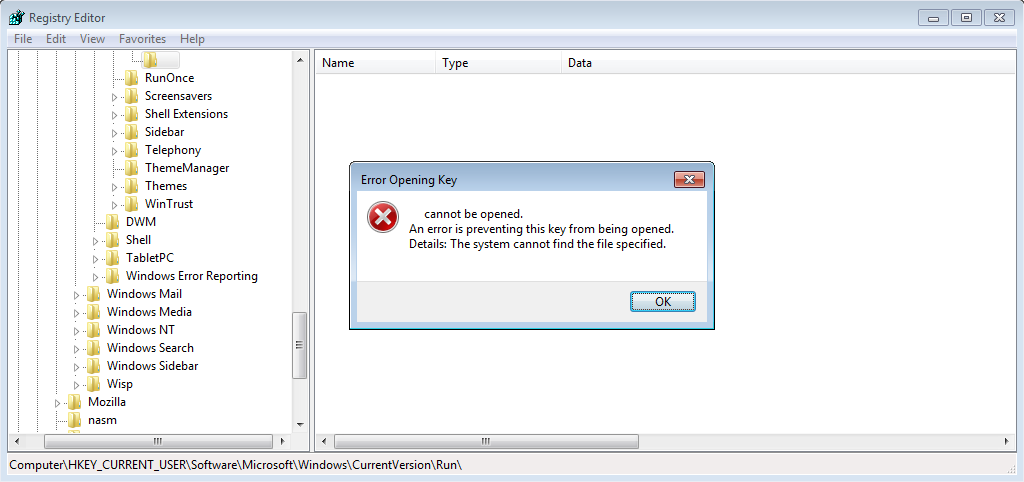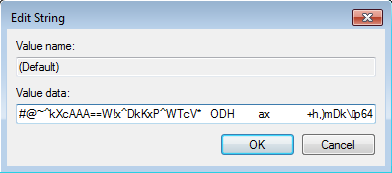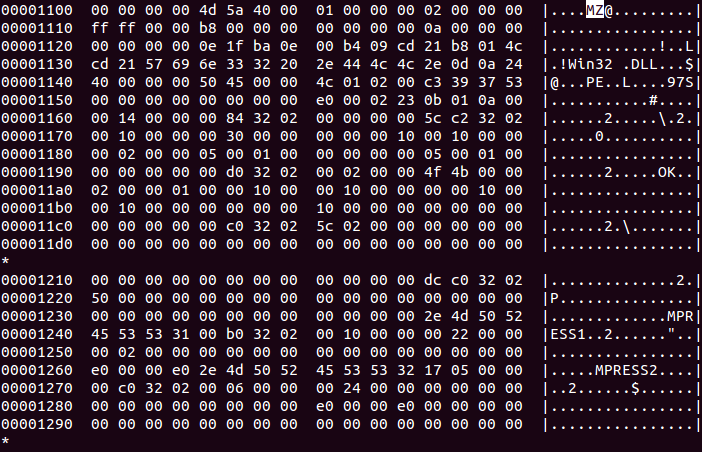Executive Summary
When security researchers talk about malware, they usually refer to files stored on a computer system, which intends to damage a device or steal sensitive data from it. Those files can be scanned by AV engines and can be handled in a classic way. The following analysis is an example of malware which resides in the registry only, is persistent and is not present as a file which can be scanned easily.
This technique is something rarely put into focus. The initial file, which starts all malicious activity on the computer system, holds all code necessary for the attack, crypted and hidden, waiting to be called and executed. To unfold the harmful actions, the attackers work step-by-step deeper into the code. Executing these steps one after the other reminds of the stacking principles of Matryoshka dolls:
- As the entry point, they exploit a vulnerability in Microsoft Word with the help of a crafted Word document they spread via email. The same approach would work with any other exploit.
- After that, they make sure that the malicious activities survive system re-boot by creating an encoded autostart registry key. To remain undetected, this key is disguised/hidden.
- Decoding this key shows two new aspects: Code which makes sure the affected system has Microsoft PowerShell installed and additional code.
- The additional code is a Base64-encoded PowerShell script, which calls and executes the shellcode (assembly).
- As a final step, this shellcode executes a Windows binary, the payload. In the case analyzed, the binary tried to connect to hard coded IP addresses to receive further commands, but the attackers could have triggered any other action at this point.
- All activities are stored in the registry. No file is ever created.
So, attackers are able to circumvent classic anti-malware file scan techniques with such an approach and are able to carry out any desired action “when they reach the innermost layer of the Matryoshka doll” – even after a system re-boot!
To prevent attacks like this, AV solutions have to either catch the file (the initial Word document) before it is executed (if there is one), preferably before it reached the customer’s email inbox. Or, as a next line of defense, they need to detect the software exploit after the file’s execution, or, as a last step, in-registry surveillance has to detect unusual behavior, block the corresponding processes and alert the user.
The analysis
The G DATA SecurityLabs have analyzed persistent malware which resides in the registry only and therefore does not create any file on the infected system. An overview of this mechanism was firstly described quite recently in the KernelMode.info forum. The analyzed sample is dropped by a Microsoft Word document which exploits the vulnerability described in CVE-2012-0158. The document was reported to be found as an attachment of fake Canada Post and/or USPS email which claims to hold information about ordered items for the recipient of the spam.
Autostart feature
To start at every boot-up of the system, the malware must create an autostart mechanism. In this case, the malware creates the following registry key:

Note that the character used for the key’s name is not an ASCII character. We will come back to this fact, later. The mentioned entry contains:

The purpose of this command is to open and execute the encoded content (the tag “jscript.encode” indicates the encoding) of the key:
\\HKCU\software\microsoft\windows\currentversion\run\(default)
Hide the autostart from the administrator’s tools
As mentioned, the name of the registry key to start the malware is not an ASCII character. The purpose is to hide the entry from system tools. The following screenshot reveals the registry key’s content, opened with the common Windows tool reged

Regedit cannot read the non-ASCII character and therefore cannot open the key, as the error message shows. Furthermore, the user cannot see the key either.
Malware in a registry value – like Matryoshka dolls
The developer uses a technique which resembles the stacking principle of Matryoshka dolls: initially used code embeds and executes further code and this code then leads to even more code used and so on and so on. The initial code executed is JScript code and then a PowerShell script which finally executes shellcode that contains the malicious code of Poweliks.
Step 1 (JScript code)
It is no surprise that the content of the executed registry key mentioned above is encod

This encoding technique was initially created by Microsoft in order to protect source code from being copied or tampered with. However, a security researcher had found a way to decode this kind of data which we can use now. Looking at the decoded key, the following tasks can be identified:
- The script checks if Windows PowerShell is installed on the system. If it is not installed, the script downloads and installs it;
- It executes further code, stored in base64; examined in the next paragraph.
Once decoded, the stored code is a PowerShell script, which perfectly explains why the malware searched for/installed the software during the previous step. By default, Microsoft Windows has protection to avoid the execution of unknown PowerShell scripts. If we try to execute a PowerShell script, we have the following error message:
PS C:\Users\User> .\script.ps1
File script.ps1 cannot be loaded because the execution of scripts is disabled on this system.
The attackers circumvent this limitation by making Windows believe that the script runs in interactive mode of PowerShell. Therefore, the script can be executed without a user notification.
Step 2 (PowerShell script and its purpose)
The PowerShell script contains a variable $p, which contains Base64-encoded shellcode. It uses VirtualProtect() to render the memory executable and CallWindowProcA() to execute the shellcode in $p.
Step 3 (ASM shellcode)
The shellcode realizes several actions:
- It allocates memory, using VirtualAlloc();
- it copies data, including itself (at the offset 0x1104);
- It executes the copied code.
Have a look at the data copied to the offset 0x11

We can identify a Microsoft Windows binary (starting with MZ). Furthermore, we can see two other significant strings: MPRESS1 and MPRESS2. Theses strings are added by a packer called MPress , but we will not go into detail about the unpacking at this point. This last payload, the entire MZ, is the actual malicious part; it performs connections to two IPs located in Kazakhstan to receive commands. At the time of analyzing this case, the two IPs were already offline, so we cannot state what attack the authors wanted to launch.
As the malware is very powerful and can download any payload; the amount of possible damage is not really measurable. It might install spyware on the infected computer to harvest personal information or business documents. It might also install banking Trojans to steal money or it might install any other form of harmful software that can suit the needs of the attackers. Fellow researchers have suggested that Poweliks is used in botnet structures and to generate immense revenue through ad-fraud.
Conclusion
The analysis of this piece of code was uncommon and rather time consuming, with several code layers which were created to prolong the analysts’ work and certainly to hide the malware and to blend it into the usual system use without the user noticing the infection.
Poweliks is malware that does survive without any file creation, which is a rather rare and new technique, barely focused on – everything is performed within the memory. It only resides in the registry and executes programs from there. Furthermore, the developers hid the autostart registry key by using a non-ASCII character as the name of the key. This trick prevents a lot of tools from processing this malicious entry at all and it could generate a lot of trouble for incident response teams during the analysis. The mechanism can be used to start any program on the infected system and this makes it very powerful!
For fellow researchers:
Office documents using CVE-2012-0158:
74e0d21fe9edf7baf489e29697fff8bc4a6af811e6fe3027842fe96f6a00a2d9
88bc64e5717a856b01a04684c7e69114d309d52a885de9fc759e5a99ac20afd5
The Poweliks installer (creates the registry keys):
4727b7ea70d0fc00f96a28de7fa3d97fa9d0b253bd63ae54fbbf0bd0c8b766bb
e8d6943742663401e5c44a5fa9cfdd8fad6a9a0dc0f886dc77c065a86c0e10aa
